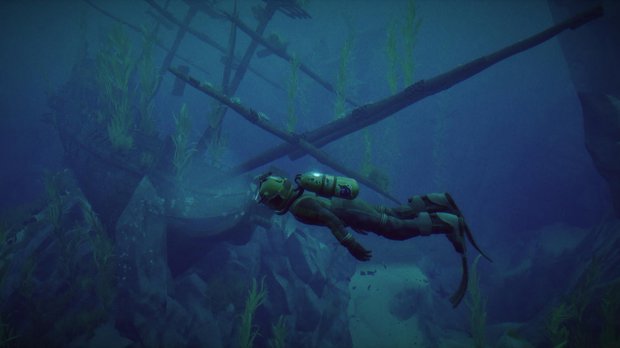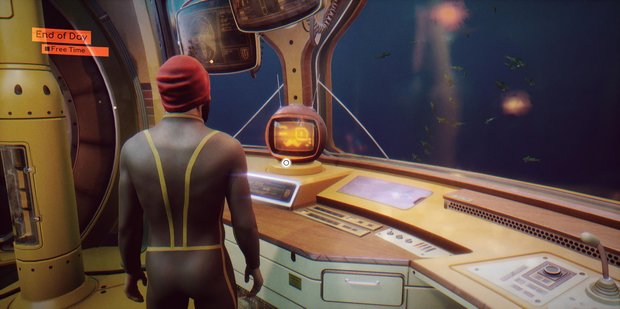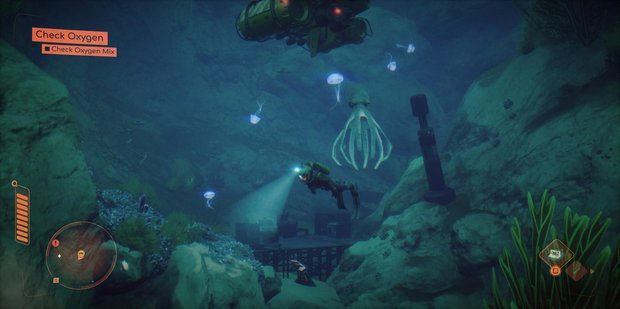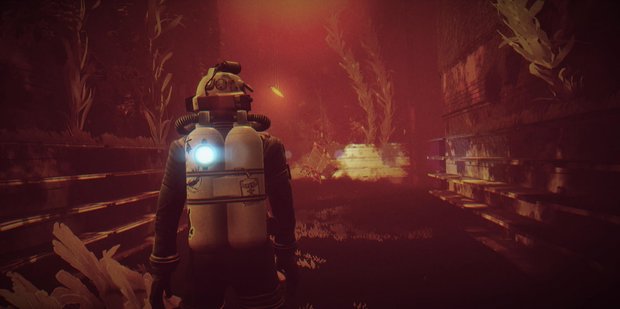Under the Waves review – Immersive deep-sea adventure delves thoughtfully into environmental and psychological themes

- 0 Comments
Ever since I played classic titles such as Heavy Rain and Fahrenheit/Indigo Prophecy, I have learned to trust that when Quantic Dream releases a game, it’s gonna be good, so I have been looking forward to Under the Waves since it was first announced. Fellow French studio Parallel Studio is actually the developer of this game, with Quantic Dream handling the publishing, but with the latter’s reputation for crafting extraordinary narratives complemented by top-notch production values, my expectations for this title were sky-high. Thankfully, I wasn’t disappointed. Together with the Surfrider Foundation, a non-profit organisation devoted to safeguarding the world's oceans, waves, and beaches, the team have managed to create a beautiful and poignant narrative, touching upon heavy themes like grief, guilt and loss, all while serving as a love letter to the ocean itself. The story leaves a bit to be desired at times, and the gameplay can get slightly repetitive on occasion, but for the most part I found myself fully immersed in its depths for hours on end, delving deeper into the abyss of not only the vast ocean, but the human mind.
Set in a futuristic 1979, we meet Stanley Moray, an offshore operator / diver, just as he descends into the sea on a one-man mission to oversee the operations of UniTrench, a big oil-drilling company. This isn’t just a routine job for Stan though, who is doing everything he can to escape the tragic reality of his own life. Some years earlier, he lost his young daughter, Pearl, and although he is still together with Emma, Pearl’s mother, he can’t get over the loss of his little girl. Hoping that he will be able to find peace by being on his own at the bottom of the ocean for a couple of weeks, he attacks the task head-on, only able to communicate with the surface through Tim, his work coordinator, and a less-than-trustworthy radio connection with Emma.
Stan is supposed to do routine maintenance and repairs on the underwater oil rigs, and for the first couple of days this goes according to plan. From the Life Module where he lives, he gets his missions and tasks from Tim every morning, and usually gets called out to check for leaks, remove algae and do minor repairs. To aid him with navigating the ocean floor, Stan has a little submersible called Moon, which enables him to more quickly and safely traverse longer distances, although he can also get out and swim around when needed.

Serving as more than just transportation, Moon becomes a character of its own, and together they explore the vast ocean surrounding them in between the required tasks at hand. Every time Stan climbs into Moon after being out swimming, he makes a loving comment as if to an old and dear friend, and the little yellow mini-sub is always nearby, marked on the map should you lose track of it. You do need to keep an eye on both Moon’s fuel level and hull integrity; should Moon become too damaged, Stan will die. This can also happen when you’re out swimming if you forget to pay attention to your oxygen level. You can turn the game’s HUD on and off to better enjoy the view, but once you turn it off, it is easy to forget to check your air supply. One thing you can do to prevent this from happening is collecting or crafting oxygen sticks, repair kits and fuel tanks. Scattered across the ocean floor, you pick up and learn crafting recipes, and by gathering trash such as plastic and metal, you can create lots of stuff, such as upgrades for Moon, helpful items and even some decorations for the Life Module.
In addition to the radio that Stan uses to communicate with Emma and Tim, there is a friendly little house robot in the Life Module called Mercury, with not just a pixelated mustache but a monocle too! Serving as a personal computer and provider of fun facts, he tries to liven up the solitary feeling in the hub, but neither he nor the colourful 70s decor are able to fully lift the pervasive heavy, lonely spirit that resides down here. Adding to the gloomy feel is the permanent grain filter applied to the graphics, which are a combination of cartoony and realistic. This doesn’t make them any less beautiful though, especially when you venture out, as the ocean and its inhabitants are portrayed gorgeously in this declaration of love to the sea. Your view distance is sometimes obscured, but anything close enough to see clearly is almost even more magical because of it: luminescent jellyfish and whales float quietly past, and the many wrecks – among them a full-size galleon – are not only highly detailed, but fully explorable as well.
As you progress, all your missions, both active and completed, are listed in the menu, together with a logbook, your inventory, and a photo album. In the logbook, you can read Stan’s journal entries as well as info and notes about the sea creatures you encounter, the other characters and the Surfrider Foundation. The inventory includes all your useful items, as well as collectibles, crafting blueprints and the resources (trash) you have removed. Among other things, collectibles include stickers you can put on your oxygen tank and the treasures you find in the sunken wrecks scattered around the ocean floor. At one point you find a Polaroid camera, which allows you to take photos of the sea creatures roaming the area, including sharks, octopuses, and the friendly and adorable seal J0, who even helps you collect plastic if you swim near him.

Besides the main missions, you are free to roam the ocean floor, looking for submerged wrecks, collectibles, new photo opportunities and secret areas. Stan is equipped with a sonar array, making it easier to survey his surroundings and find hidden items and places. There is also an interactive map where your current objective is marked, among other things, and you can set a custom marker. I really loved this part of the game, and my not-so-slight OCD for collecting and completing was thoroughly satisfied, alongside the many achievements I could earn. I spent hours roaming the bottom of the sea, looking for items and secrets, and my 13 hours of gameplay consisted mostly of optional activities.
While exploring the sea floor is fun and games for the player, it doesn’t take long before it becomes clear that Stan isn’t doing so well. From his very first night, he is plagued by horrible nightmares that persist throughout his stay in the deep. He is obviously trying to cope with the loss of Pearl, and as time goes on, he is more and more affected by the solitude of his situation. As the days pass, Stan’s routine missions also become darker and more sinister, and we realise that there are a lot of things that aren’t right down here. UniTrench’s unethical methods and exploitation of the ocean have gone too far, and have caused irreversible damage to nature. At the same time, Stan’s fragile state of mind makes separating reality from illusion more difficult, and the deeper Stan delves into the underwater mysteries, the deeper he falls into his own depression.
Where Quantic Dream have been known to offer choice-based narratives in the past, Under the Waves is stripped of all but one decision at the very end of the game. The story is quite linear, and you as the player don’t have any influence on it. Another signature staple that has been significantly reduced is mandatory Quick Time Events; there are only a couple of times you need to smash a button to force open locked doors, or roll on the controller stick to open a valve. And if even that’s too much, it can be changed in the settings to where you only need to push and hold a button instead. There are some optional minigames linked to achievements in which QTEs are put more to use, however. After finding a guitar in a wreck, you can play some tunes in a Guitar Hero-like minigame, and test your speed and focus on a boxing bag, both of which require quick clicking and reaction.

The game is also pretty light on puzzles, as your main challenge is to steer Moon around to complete routine missions, where you mainly flip switches or activate mechanisms without anything much more demanding than clicking a button. There were a couple of times where my patience was tested though, when I had to drive Moon through narrow tunnels deeper and deeper into the underwater oil facilities, not knowing which way to go because the map wouldn’t pin an objective. Had it not been for my hoarding repair kits, Moon would have exploded for sure. These sequences also made me a little bit seasick, even though I had turned off “camera sway” in the settings.
Accompanying your underwater adventure is a soundtrack that is absolutely breathtaking. There are some truly beautiful and soul-stirring melodies, ranging from melancholy piano music to chill and moody rock. The score creates an absolutely perfect atmosphere for your journey into the depths of the ocean and Stan’s mind, and it has haunted me for days since I finished the game. Equally stunning are the ambient sounds and background audio: sometimes you can hear the eerie cries of whales swimming in the distance, not to mention the mechanical beeps and murmurs from the equipment mixed in with the whooshing of the ocean.
The voice acting is also great, as you would expect from a Quantic Dream game, but one thing that both annoyed and kind of surprised me was the lip sync, or rather lack of it. When Stan speaks, his mouth doesn’t at all match the words he is saying, and when he takes a brief pause in his many monologues or dialogues, his mouth keeps on moving; a minor detail, sure, but still irritating.
As Stan’s stay on the ocean floor neared its conclusion, I started feeling nervous that the ending wouldn’t be able to live up to the rest of the game, and unfortunately my suspicion was confirmed. Without spoiling anything, I wish the finale was given a little more attention, as it feels rushed and underwhelming. Both potential outcomes provide closure for Stan’s personal journey one way or another, but I felt that they were a bit too simplistic with regard to the heavy themes of loss and grief. In addition, there were several missed opportunities due to certain story elements that weren’t explored further, and I’d have liked to see the conclusion address them better. Nevertheless, what is truly and brilliantly conveyed throughout the game is the way we humans continue to exploit and destroy our planet, and Under the Waves serves as a heartbreaking and grim reminder of how nature suffers because of how we abuse it.
Final Verdict
Having played and loved Quantic Dream’s previous games, I very much enjoyed their first foray into third-party publishing. Under the Waves is a smaller production, but it took me on a journey into the abyss, both literally and figuratively. With stunning deep-sea settings, gameplay that kept me captivated, and a truly amazing soundtrack, I had no problems losing myself in the game for hours on end. Despite being very light on actual puzzles, and having a couple of lost opportunities to explore some subplots further, I was truly moved by this beautiful game, and left feeling all the more aware of its powerful and important message about how we treat our planet.
Hot take
The otherwise moving narrative of Under the Waves misses out on some lost opportunities, but if you have an affinity for collecting, exploration and ocean preservation, you'll effortlessly immerse yourself for hours in this enchanting, beautiful underwater adventure.
Pros
- Impressive deep-sea visuals
- Great voice acting and amazing atmospheric soundtrack
- Gripping story about dealing with grief
- Fun gameplay revolving around collecting and exploring
- Raises awareness of an important environmental matter
Cons
- Slightly repetitive gameplay without any actual puzzles
- Voice isn’t synced with animation
- Slightly disappointing ending
Aurora played her own copy of Under the Waves on PlayStation 5.

- Advertisement
- Help support AGH by advertising with us










0 Comments
Want to join the discussion? Leave a comment as guest, sign in or register.
Leave a comment